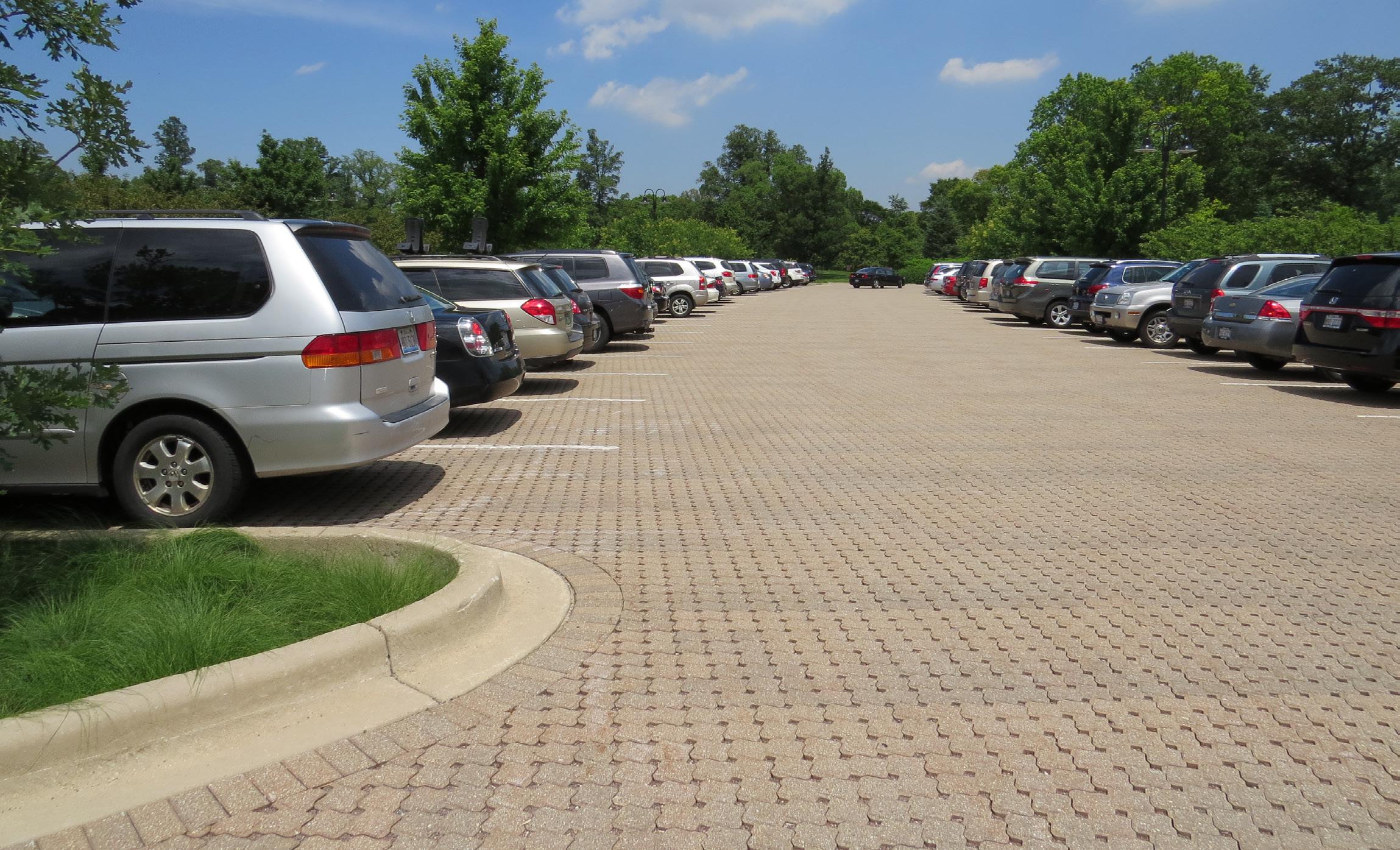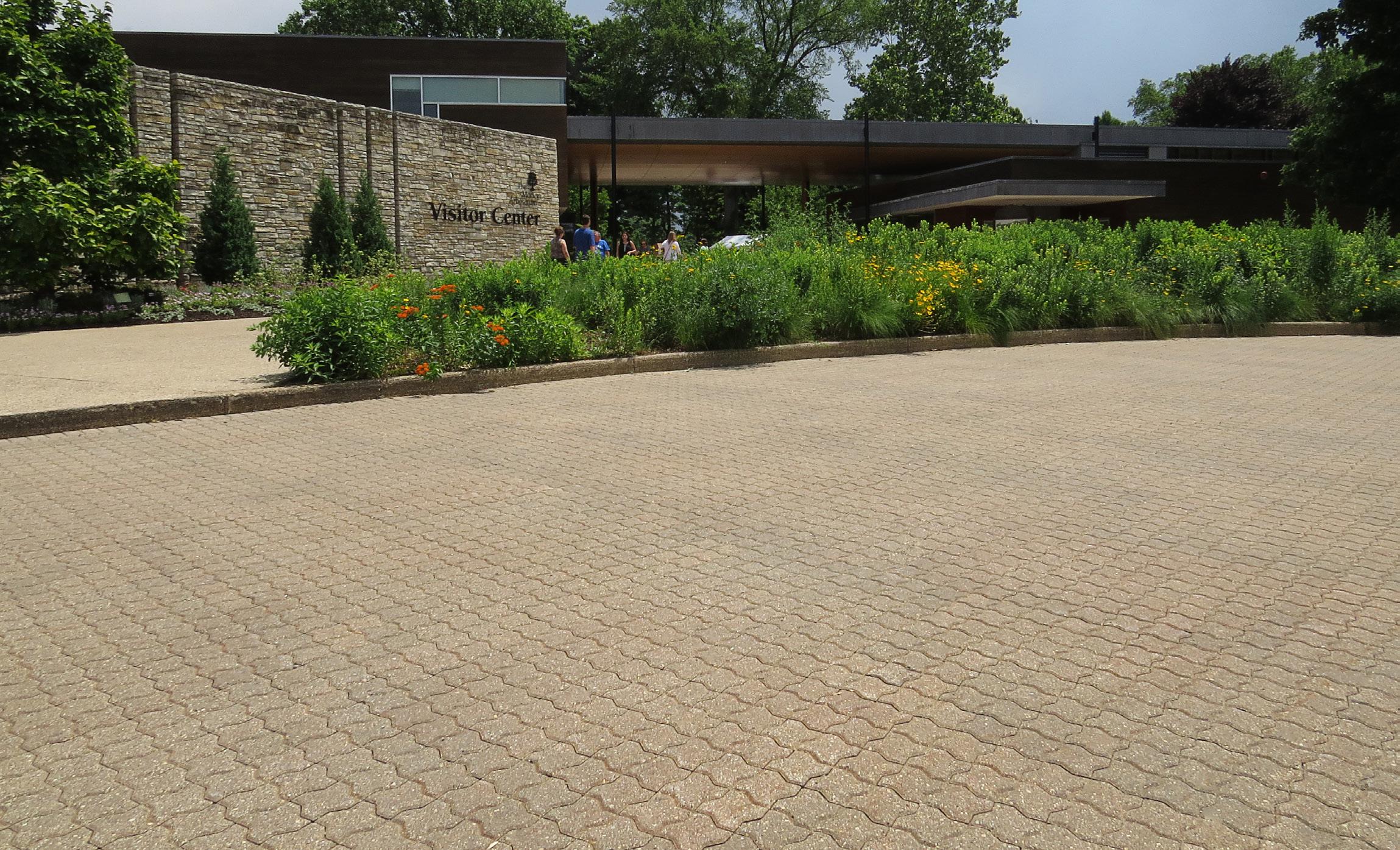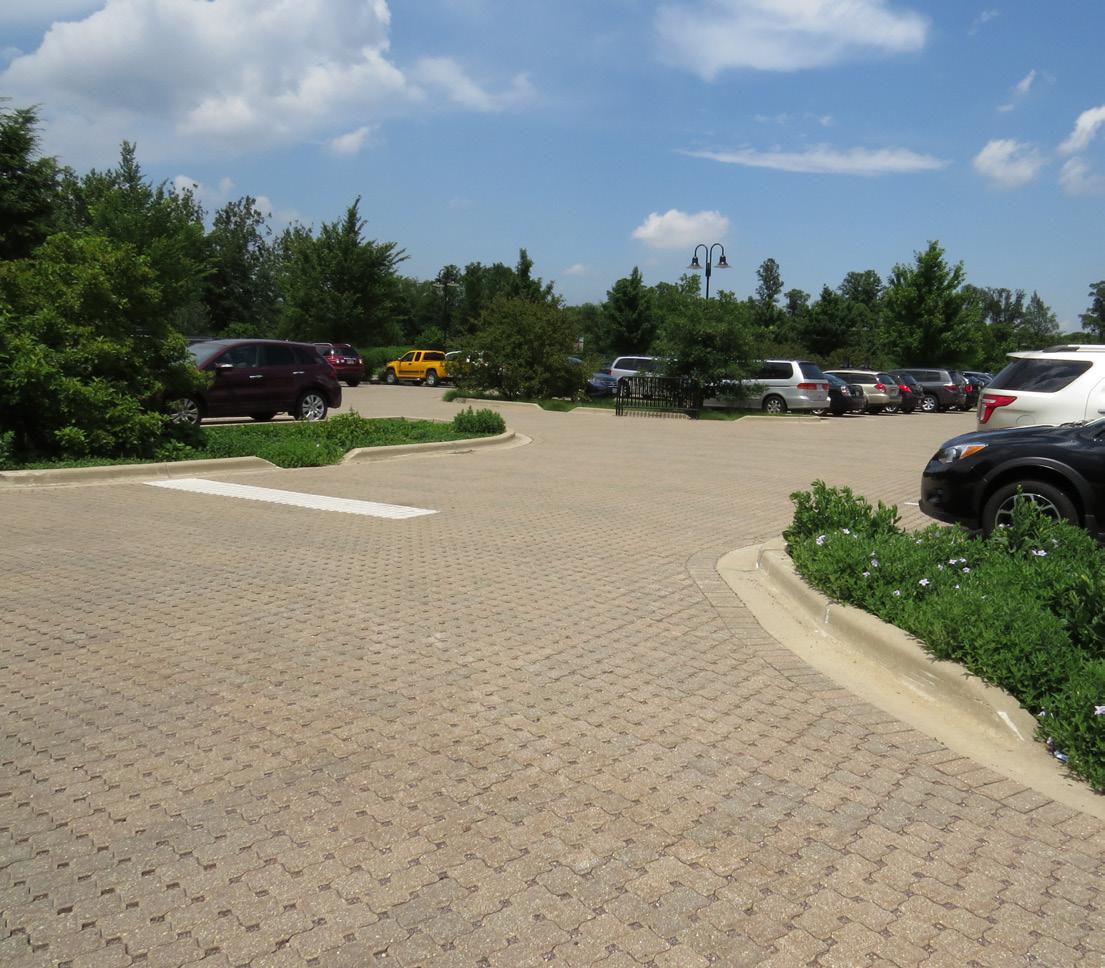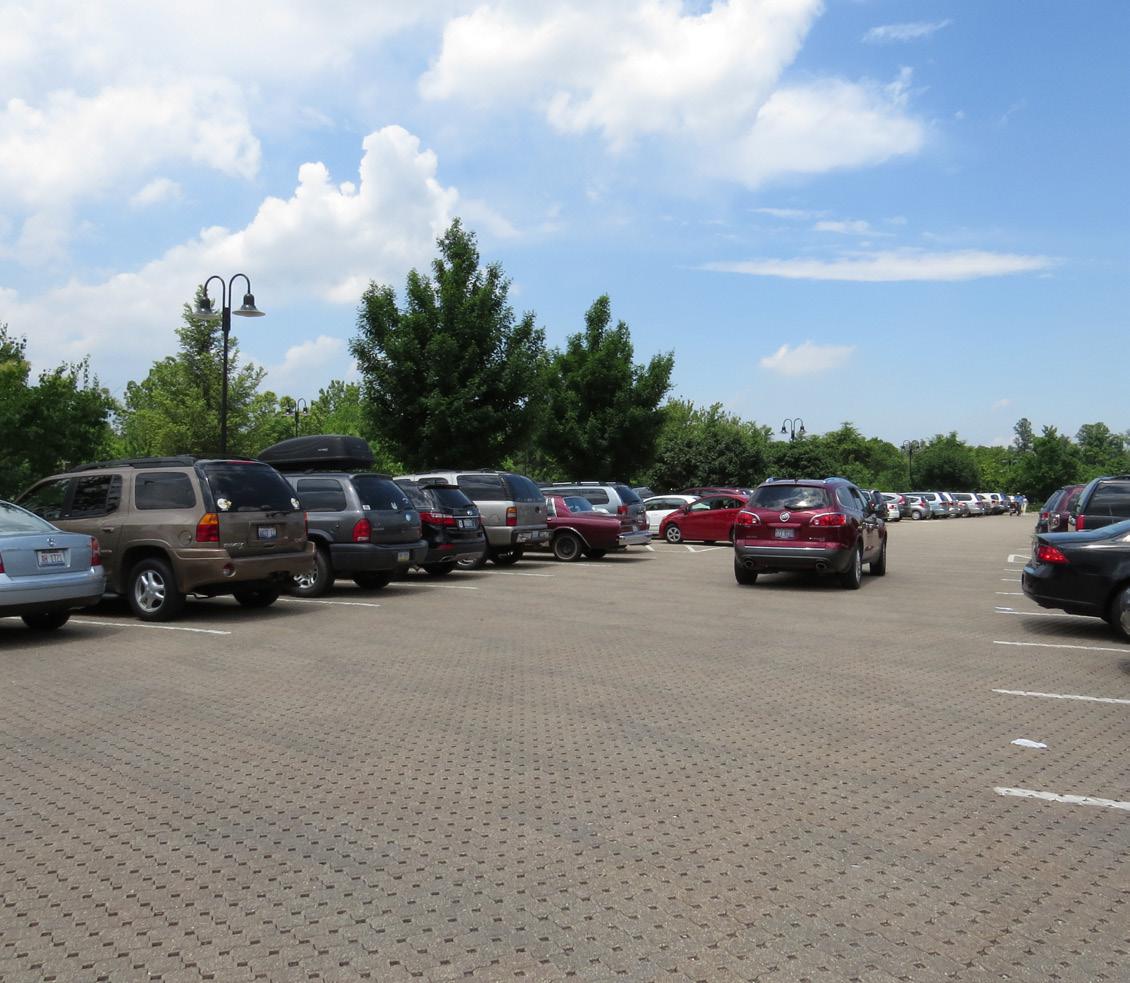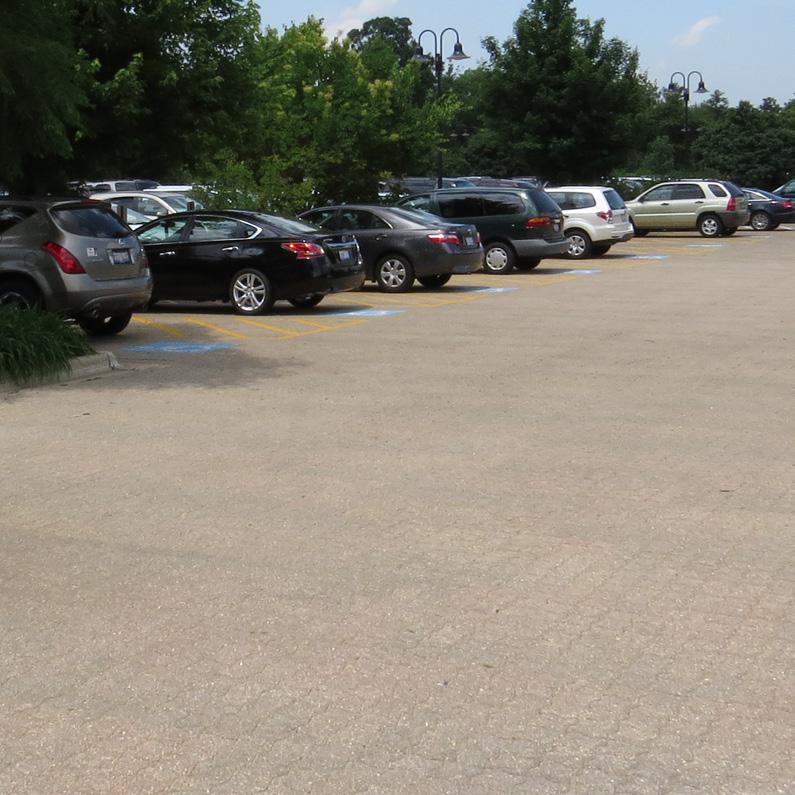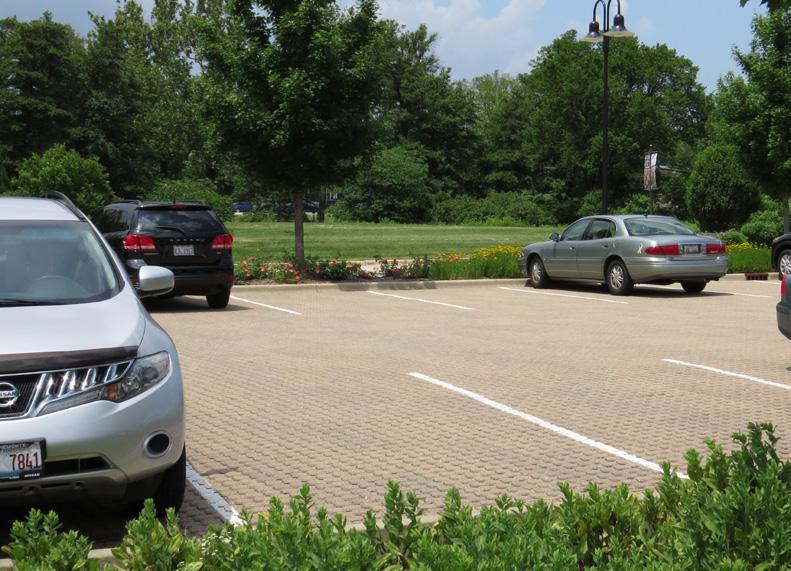CHALLENGE
The Morton Arboretum, located in DuPage County, IL., decided in the late 1990’s to undertake a large-scale redevelopment of their 1700-acre outdoor museum. Established in the 1920’s, the Arboretum has a proud history of preserving and enhancing the environment. It has primarily served as a research facility, however, the board of directors wished to increase visitation and undertook development of a large-scale, 20-year master plan that would include a new visitor center, gardens and a new, much larger parking area.
Since the facility received a grant from the Illinois Environmental Protection Agency’s (IEPA) Clean Lakes Program for a complete restoration of Meadow Lake, which lies adjacent to the visitor center and parking lot, an impervious asphalt lot was deemed inappropriate for the “low impact” design parameters of the project. An asphalt lot would produce significant concentrations of pollutants in stormwater run off and increase thermal loads on the lake, thereby degrading water quality and negatively impacting biodiversity of the ecosystem.
INFLUENCE
To solve this problem, the designers for the project, Andrew J. Sikich, P.E. and Patrick D. Kelsey, CPSSc/SC of Christopher Burke Engineering West, Ltd., in St. Charles, IL, decided to construct a “green” parking lot that would incorporate a number of best management practices (BMPs) and would filter and infiltrate stormwater prior to entering the lake. To facilitate construction of the parking lot, the Arboretum applied for and received an IEPA 319 Grant to construct BMPs within the parking area. The matching 60/40 grant would give the Arboretum up to $1.2 million for the design and construction of the parking lot. The designers then had to consider the different BMPs available and decide which were most suitable for the project.
SOLUTION
After extensive research and site analysis, the designers chose Ecoloc® permeable interlocking concrete pavers and bio-swales for the parking area. In addition, a downstream created wetland was included in the project design. The EPA encourages the use of multiple BMP practices on a site to meet minimum management objectives. The bio-swales were ideally suited for the long, linear medians in the parking lot and would provide additional infiltration of stormwater using plants and permeable soil to filter pollutants.
The designers worked closely with manufacturer Unilock Chicago of Aurora, IL, on the pavement design. It was determined early in the design process that the pavement would need to be heavy duty. The designers felt that the Ecoloc paver system would be the best choice over the long-term, due to its lower life-cycle cost and long-term durability, as well as environmentally beneficial infiltration capabilities.
The pavers were produced in a custom color and the Arboretum chose a crushed granite for the void and joint fill material to match the paver color. Over 173,000 square feet of Ecoloc permeable interlocking concrete pavers, as well as 32,000 square feet of Anchorlock® solid interlocking concrete pavers were mechanically installed by LPS Pavement Company of Oswego,
IL.
The cooperative design process between the Morton Arboretum, Unilock, engineers, landscape architects, regulators, and contractors in this group of collaborators facilitated an end product that is not only good for the environment, but also very functional for the Arboretum. After construction, the Arboretum, Unilock Chicago, and Christopher Burke Engineering decided to undertake a 2-year research project on the effectiveness of the BMPs utilized in the project. Plans call for monitoring the reduction in stormwater run off, as well as the increase in water quality to the downstream receiving.

